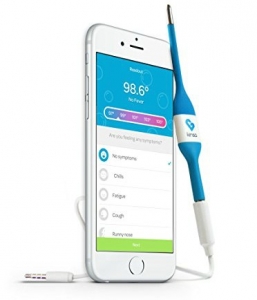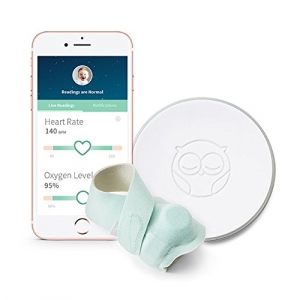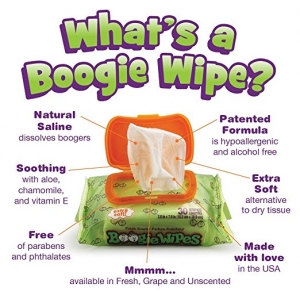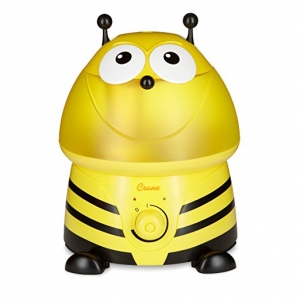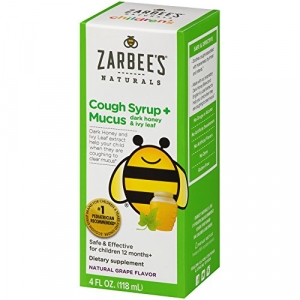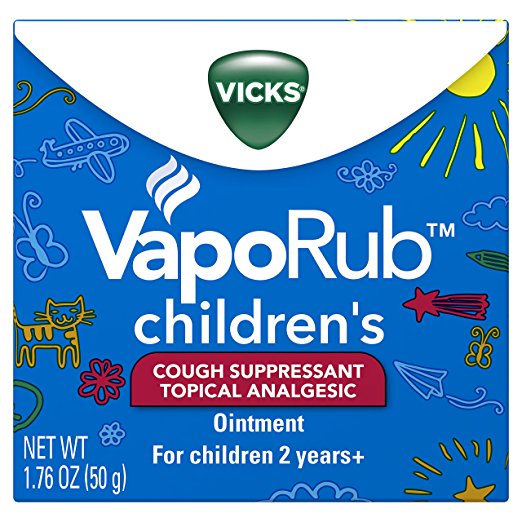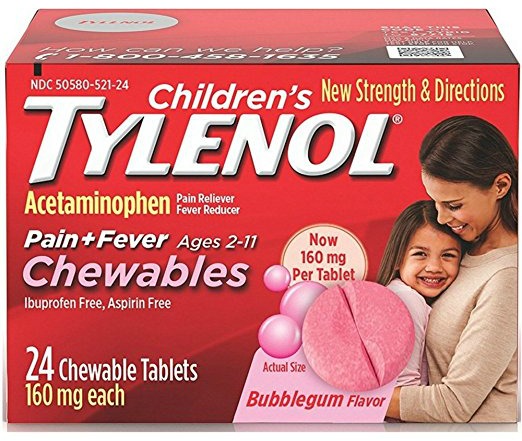20 Safe Pediatric Products For Fighting Your Child’s Common Cold
February 27, 2018
- 157
- 170shares
With colds, influenza, and RSV in full force, I know many parents are stocking up on cold survival products. There are so many out there to buy, it can feel a little overwhelming. Which cough and cold medicine is right for your child? When caring for sick children, it’s important to not just get any cold medicine or product with “children” on the label. You need to make sure you are picking up cold medication and products that are proven to be both safe and effective for children.
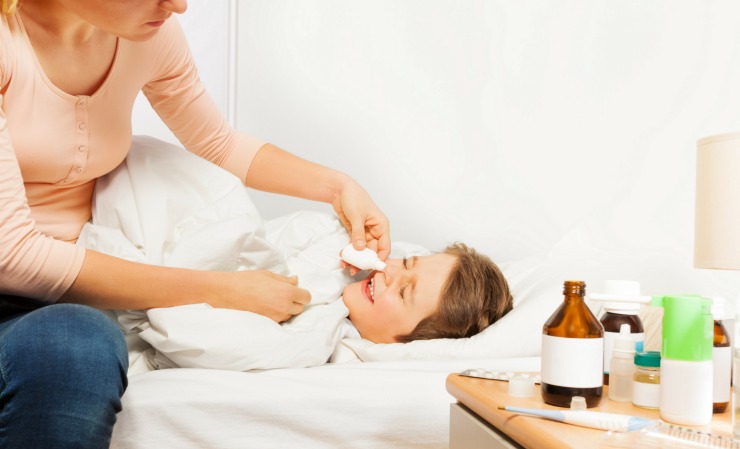
KidNurse Approved Cold Medicine & Products
These are the children’s cold medicine and products I like to recommend for my little patients. Note: this post contains affiliate links.
Thermometers For Kids
When your little one is feeling warm, it’s important to have a thermometer on hand to take their temperature.
Kinsa Smart Thermometers
Finally, a thermometer that meets modern parent’s needs! I love that the Kinsa Smart thermometer is high tech. It comes with an app, so you can actually track your child’s temperature (so, no more forgetting temperatures in the middle of the night or jotting down numbers in the dark!). It is digital and easily plugs into your phone, so you never need batteries. Also, this is an FDA cleared product – yay!
- Kinsa digital stick thermometer: What is probably most important to me as a pediatric nurse practitioner, is that this smart stick allows you to take the rectal temperature of your infant. As I talk about in our free fever ebook, rectal temperatures are the gold standard until an infant reaches their first birthday. It truly is the most accurate way to measure your infant’s body temperature. The Kinsa makes this process it simple and remembers the temperatures for you in the app!
- Kinsa digital ear thermometer: By the time your child is about 6 months old, their ear canals are large enough to start taking their temperature tympanically (in their ears). Tympanic thermometers are quick, easy, accurate, and definitely kid friendly! While rectal thermometers are still the gold standard until 12 months, parents can use tympanic thermometers starting at 6 months for a less invasive reading. I, along with every other health care professional I know, prefer tympanic thermometers over oral or axillary measurements. Sqirmy kids? No problem – the Kinsa tympanic thermometer can get an accurate reading in 1 second!
Don’t need a thermometer that high tech? While this tympanic thermometer from Braun doesn’t connect to an app to record your child’s temperature, it has great reviews.
There is nothing wrong with using a basic thermometer if it works for you. But there are two kinds of thermometers that you should NOT buy:
- Pacifier thermometers: they look like a cool invention for babies, right? As cool as they may look, they are NOT accurate for measuring temperatures and should not be used.
- Mercury thermometers: they can be highly toxic if broken!
Pulse Oximeters For Kids
We use pulse oximeters in children all the time to help assess their ability to breathe and oxygenate their blood. In older children, we can attach the pulse oximeter to their finger and in infants we typically connect the probe to their large toe.
A healthy child should have a pulse oximetry reading of 95% or greater. While a pulse oximeter is just one piece of the puzzle, I think this tool is helpful for many parents, especially parents who have children who are prone to coughing, respiratory illnesses, or asthma.
For children ages 2 and older, I like using this Acc U Rate pulse oximeter for children. Infants’ fingers are too small for a classic finger model. I think the best commercially available pulse oximeter for infants is the Owlet smart sock.
Must-Haves To Fight Congestion
Nose Frida: I know, I know. At first look, this seems a little gross. But let me tell you, the Nose Frida is EFFECTIVE.When children can’t blow their nose, you have to get the snot out for them. Myself, and all the other pediatric nurses in our KidNurse Community, think this is the most effective way to help stuffy, congested infants.
The filters in the Nose Frida prevent any snot from getting through, so, no, you won’t get anything gross in your mouth. The Nose Frida easily disassembles for cleaning purposes. I think it works best on infants around 2 months and older. The Nose Frida is a tool that must be in every mom’s cough and cold toolbox!
Bulb Syringe (newborns): Bulb syringes are usually sent home with parents after welcoming their new baby! They are a tried and true method for suctioning snot. While my preference is still hands-down the Nose Frida, bulb syringes work well on newborns with very small nasal passages. I find that most infants aren’t ready for the Nose Frida until about 2 months old. This is a good tool to use in the mean time!
Nasal Saline: Using nasal saline in children and infants before trying to suction their congestion is very helpful. The saline helps loosen the secretion while moisturizing the nasal passages. This works hand-in-hand with a Nose Frida or traditional infant bulb aspirator. I like the Nose Frida saline, because it simply contains water and sea salt.
Boogie Wipes: We have all been there. You know those colds that produce so much snot your nose is raw from using tissues? Ouch! Boogie Wipes are nose wipes that are moistened with saline, aloe, chamomile, and vitamin E. I think these are a diaper bag must-have. Be ready to wipe away your little one’s snot without drying out their skin with these wipes!
Cough Aids For Kids
Humidifiers
There is some debate as to the efficacy of humidifiers and cold symptoms in children. The research on the topic in recent years has been mixed. Here is what we know for sure: if humidifiers aren’t cleaned regularly, they can disperse mold into your child’s environment. Yuck. We also know that any “steam” or “hot” setting on humidifiers is too hot and can potentially burn your child. Be sure to avoid that and try either “cool” or “warm” settings. Still, I have worked with many parents who feel like humidifiers definitely improve cough and cold symptoms.
I really like Crane humidifiers for several reasons:
- I’m not going to lie, Crane humidifiers are absolutely adorable. This is a win in my mind. They have 19 adorable animal models that are very fun for kids (and their moms) to pick from.
- These are ultrasonic humidifiers, which means they produce mist which dissipates into the air instead of droplets that fall to the ground.
- Cleaning your humidifier is very important to prevent mold build up. Crane humidifies are easy to disassemble, making cleaning easier. They also include an antimicrobial filter in the base of the humidifier which helps to prevent mold build up. I recommend that parents try to clean out their child’s humidifier at least every 2-3 days. Crane has an easy step-by-step video on how to do this.
- Crane humidifiers have an auto-off function that shuts the humidifier off when there is no more water in the tank, so that is one less thing for parents to worry about.
Wedge Pillows
When children are congested and coughing, we know that elevating the head of their bed can sometimes help calm their symptoms.
- Toddler/child Wedge Pillow: One of the most important rules for safe sleep and SIDS prevention is laying your infant on their back to sleep on a firm surface free of stuffed animals, pillows, and blankets until they are at least 12 months of age. When your child is over the age of 12 months, a wedge pillow can sometimes help congested children sleep better. This wedge pillow will be a great edition to your cough and cold supplies (it works wonderfully for adults, too)!
Over-The-Counter Cough Medicine
It’s extremely important to remember that most cough medicine isn’t approved for children under the age of 4 years old. While once very popular (likely when you were a child), as of 2008, the FDA and American Academy of Pediatrics no longer recommend cough suppressing medications for children under the age of four years old due to safety and inefficacy concerns. You can read more about helping your child’s cough without medicine here.
However, here are some approved, over-the-counter products that may help your coughing child.
Cough Medicine For Kids
Zarbee’s Cough Syrup
Zarbee’s cough syrup was created by a pediatrician. The main active ingredient is honey. Honey has been shown in several research studies to help children with coughs. It’s lovely to find safe, natural ingredients that help our children! My patients have had great results with Zarbees.
- Zarbees Cough Syrup for babies age 2-12 months: This cough syrup is made with a blend of organic agave and English Ivy Leaf. It does not contain honey, which is why it can be given to children ages 2 to 12 months.
- Zarbees Cough Syrup for children: Recommended for children 12 months and older, Zarbees Cough Syrup for children is a blend of dark honey, English Ivy Leaf, vitamin C and zinc.
Children’s Vicks VapoRub: This Vicks VapoRub is formulated for children 2 years and older and can be helpful with congestion and cough when applied properly. The main ingredients in this rub include camphor, eucalyptus, and menthol. It’s important to only apply on your child’s chest and neck. Do not put Vicks VapoRub on your child’s nose or in their nostrils. Camphor can be toxic when absorbed through mucous membranes or broken skin.
Pain Medicine And Fever Reducer For Kids
Children who have colds regularly get fevers. While most childhood fevers are nothing to worry about, sometimes we recommend using either Tylenol or Advil if a child is uncomfortable or in pain. For more information on how to treat your child’s fever, download our free fever ebook on the homepage of KidNurse.
It’s important to note that many formulations of Tylenol or Advil also contain cough suppressants. I do not recommend these, and neither does the FDA (like I mentioned above!). You have to read labels closely.
Buy the medications that only contain Tylenol or Advil:
- Infant Tylenol/Acetaminphen: 2 months — 2 years
- Children’s Liquid Tylenol/Acetaminophen: 2 years and older
- Children’s Tylenol/Acetaminophen Chewable Tablets: 2 years and older
- Infant Advil: 6 months — 23 months
- Children’s Advil: 2 years and older
Also, it’s important to remember that these medications are dosed according to your child’s weight. If you don’t know the appropriate dosage of Tylenol or Advil for your child, I’d highly encourage you to view our dosage charts here: Tylenol dosage chart and Advil dosage chart.
Ultimately, sometimes the best cough and cold solutions are free. Children can never get enough extra rest and extra cuddles when they aren’t feeling well. If that’s not cutting it, I hope you find this list of cough and cold medicine and products helpful in bringing your family extra relief until your kids are back on their feet again!
Author: Dani Stringer, MSN, CPNP, PMHS – founder of KidNurse and MomNurse Academy
- 157
- 170shares
